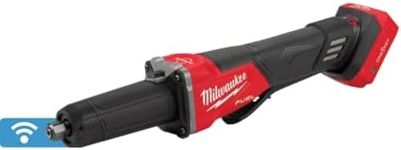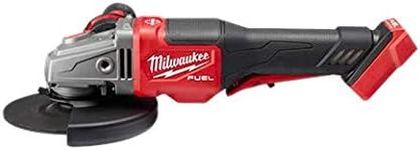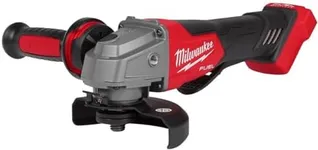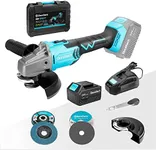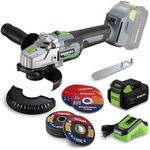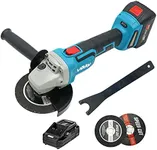Buying Guide for the Best Milwaukee Grinders
When it comes to picking the right Milwaukee grinder, it's important to understand the key specifications that will determine how well the tool will meet your needs. Grinders are versatile tools used for cutting, grinding, polishing, and more. To ensure you get the best fit for your tasks, you need to consider several factors such as power, speed, size, and additional features. By understanding these specifications, you can make an informed decision and choose a grinder that will perform efficiently and safely for your specific applications.PowerPower in grinders is typically measured in amps for corded models and volts for cordless models. This spec is important because it determines how much force the grinder can apply to the material. For light tasks like polishing or light grinding, a lower power grinder (around 6-8 amps or 18 volts) will suffice. For more demanding tasks like cutting through metal or heavy grinding, you will need a higher power grinder (10 amps or more, or 20 volts and above). Choose the power level based on the intensity and frequency of the tasks you plan to perform.
SpeedSpeed is measured in revolutions per minute (RPM) and indicates how fast the grinder's wheel spins. Higher speeds (10,000 RPM and above) are suitable for cutting and grinding hard materials quickly, while lower speeds (around 6,000-8,000 RPM) are better for precision work and polishing. Consider the type of work you will be doing most often; if you need versatility, look for a grinder with variable speed settings so you can adjust the RPM to match the task.
Disc SizeThe disc size refers to the diameter of the grinding wheel and is a crucial factor in determining the grinder's capability. Common sizes are 4.5 inches, 5 inches, and 7 inches. Smaller discs (4.5-5 inches) are ideal for detailed work and accessing tight spaces, while larger discs (7 inches) are better for heavy-duty tasks and covering larger surface areas quickly. Choose the disc size based on the type of projects you will be working on and the level of precision required.
Weight and ErgonomicsThe weight and ergonomics of a grinder affect how comfortable it is to use, especially for extended periods. Lighter grinders (around 4-6 pounds) are easier to handle and reduce fatigue, making them suitable for overhead or detailed work. Heavier grinders (7 pounds and above) offer more stability and control for heavy-duty tasks. Additionally, look for features like adjustable handles, anti-vibration technology, and comfortable grips to enhance usability and reduce strain.
Safety FeaturesSafety features are essential to protect you while using the grinder. Look for grinders with features such as a safety guard to protect against debris, a spindle lock for easy wheel changes, and an automatic shut-off to prevent overheating. Some models also offer paddle switches that require continuous pressure to operate, reducing the risk of accidental start-up. Prioritize safety features based on the environment and conditions in which you will be using the grinder.
Battery Life (for Cordless Models)For cordless grinders, battery life is a critical factor. It determines how long you can use the tool before needing to recharge. Higher amp-hour (Ah) ratings indicate longer battery life. For occasional use or light tasks, a battery with 2-3 Ah may be sufficient. For more intensive or prolonged use, consider batteries with 4 Ah or higher. Additionally, check if the grinder is compatible with other tools in your collection, allowing you to interchange batteries and maximize efficiency.





